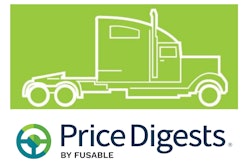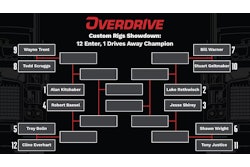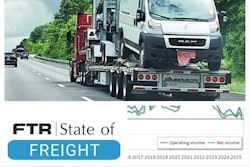Motor carriers/affiliates' lease-purchase plans and programs have traditionally been somewhat well-used paths to truck ownership, particularly among operators with otherwise shaky credit, but the reality is that among established owner-operators, few at any given time have purchased their current truck that way. Overdrive surveys of recent history have shown only about 5% of all owner-operators running in a truck they purchased through such a program.
Carrier lease-purchase programs generate controversy for practices that favor the company at the owner-operator’s expense.
Common complaints include abnormally high weekly payments, mileage reductions toward the end of the contract, undisclosed fees and charges/deductions, and the inability to transfer the leasing arrangement to another carrier. But some carriers live up to the commonly expressed intention of developing an owner-operator base and helping contractors develop their businesses.
[Related: Carrier lease-purchase programs 'meaningful' for at least half of lessee operators]
If you have questions after reading any such contract and the operating agreement that comes along with it, consider hiring a lawyer or financial adviser to review it. Make sure items such as any down payment, weekly or monthly payments, maintenance escrow account deductions, length of contract and what you’ll owe at the end of the agreement if you select the option to purchase the truck are spelled out.

Work up a budget to get an idea of what lease payments you can afford and how much revenue you’ll need to cover payments and other financial obligations. Given the age of the truck, estimate what it will be worth when you complete the contract.
Many carriers offer no-money-down contracts, but this often means higher periodic payments. Be alert to the amount of any balloon payment at the contract’s end and how you’re going to save for it.
The terminal rental adjustment clause (TRAC) lease, the basic form of the lease-purchase, is intended to allow shared responsibility between the lessee and lessor.
It gives the owner-operator the right of ownership at the lease’s end. The operator can choose to pay the residual, or balloon, at the term’s end or opt to take whatever equity he or she may have -- if the truck is worth more than the residual amount owed -- and move into a different truck, using the equity as a down payment. Secured directly with a dealer’s finance department, a TRAC lease traditionally is intended to reduce cash outlays over the lease's term, and generally will be available only to those with better credit than is required of a traditional loan in today’s world, in some ways the exaclty opposite of a carrier's lease-purchase program. There, trucking companies look past shaky credit in exchange for a commitment to work with the company to move freight for its shipper customers -- one of the other reasons they can sometimes come with outsize lease payments and why some look askance at such programs. The lessor effectively controls the ability of the lessee to make the payments.
Before signing on the dotted line with any carrier's program, consider these areas:
ESTIMATE TRUE COSTS. Calculating the total cost of a truck under a lease-purchase plan can be difficult. It’s easy to hide the amount of interest in vehicle leases. Beyond knowing the monthly lease payment, if you want to exercise the purchase option at lease end, make sure you can effectively estimate the total purchase price. If you're looking at lease options as well as traditional loans to purchase, use an online loan calculator to estimate the total cost of a similarly spec'd truck in new or used markets over the same time period as the lease contract. If lease payments and a final balloon purchase add up to a much higher figure than what you could get through traditional financing -- if you can take that route at all -- reconsider or make extra certain you're getting needed support for the additional investment that's truly worth the money.
Don't forget to take into account what the leased vehicle will be worth by the time you take ownership. Otherwise, you run the risk of having little equity to put toward your first trade. Some buyers have come to final payment only to find the truck is worth less than the amount owed.
[Related: Ways to handle per-diem and depreciation deductions and cut against common tax myths]
COMPARE LEASE-PURCHASE PROGRAMS. If you haven’t been with a company long, establish trust with management, and learn the details of the operation. Once you understand your company’s lease-purchase program, call other carriers and compare their programs.
RESEARCH YOUR COMPANY’S FINANCIAL STABILITY. Most lease-purchase programs tie you to the company until the end of the lease, so the company’s health could impact your ability to complete the lease. If the company is publicly traded, its financial picture is available online and elsewhere. If it’s private, don’t be afraid to ask about its long-term financial prospects and debt level. Learn about its reputation within the industry.
Research the economic outlook for its primary shippers. A downturn in freight could reduce your miles and destroy the chance of completing your lease.
CHECK OUT THE TRUCK YOU INTEND TO LEASE. Ask to see maintenance records and inquire about any major repairs. Make sure all recalls have been addressed and problems fixed. If warranties are offered, study the terms.
Ask how many times the truck has been leased. This will give you insight into not only the equipment itself but also the lease-purchase program. Numerous leases on a particular truck should be a red flag.
[Related: Used trucks: How to evaluate a rig to protect long-term value prospects]
BE PREPARED FOR THE PAYOFF. In the case of an end-of-lease balloon payment, devise a financial plan that will ensure you can make that final payment. Calculate what you will owe compared to the truck’s estimated value at that point. You don’t want to be underwater at the end of the lease -- owing more than the truck is worth. Nor do you want to make payments for years and have little or no equity because you can’t make that final payment.
UNDERSTAND ESCROW ACCOUNTS. A maintenance escrow can be helpful if you are inexperienced with a truck’s upkeep and saving money, but some lease-purchase escrows give limited or no control over your use of the funds. There might be a minimum balance requirement that forces you to pay out of pocket for a repair.
Other escrow accounts can be required, such as a security escrow to cover expenses the lessee fails to pay. Make sure that you can get the escrow balances back when you complete the lease or if you change carriers.
ASK QUESTIONS. If you’re thinking about a lease-purchase plan, ask the carrier:
- What happens if I want to change carriers?
- Is there a penalty for early payoff?
- Will an accurate account of payment show up in every settlement?
- Will I be able to show a profit after payments are deducted?
- How long before I own the truck?
- What percentage of lease-purchase participants in your plan eventually take ownership of their tractors?
- Am I free to choose where maintenance is performed, and what are the terms for return of unused funds in any maintenance escrow at the end of the lease?
Read next: Traditional loan, TRAC lease, full-service lease: Making the comparison













